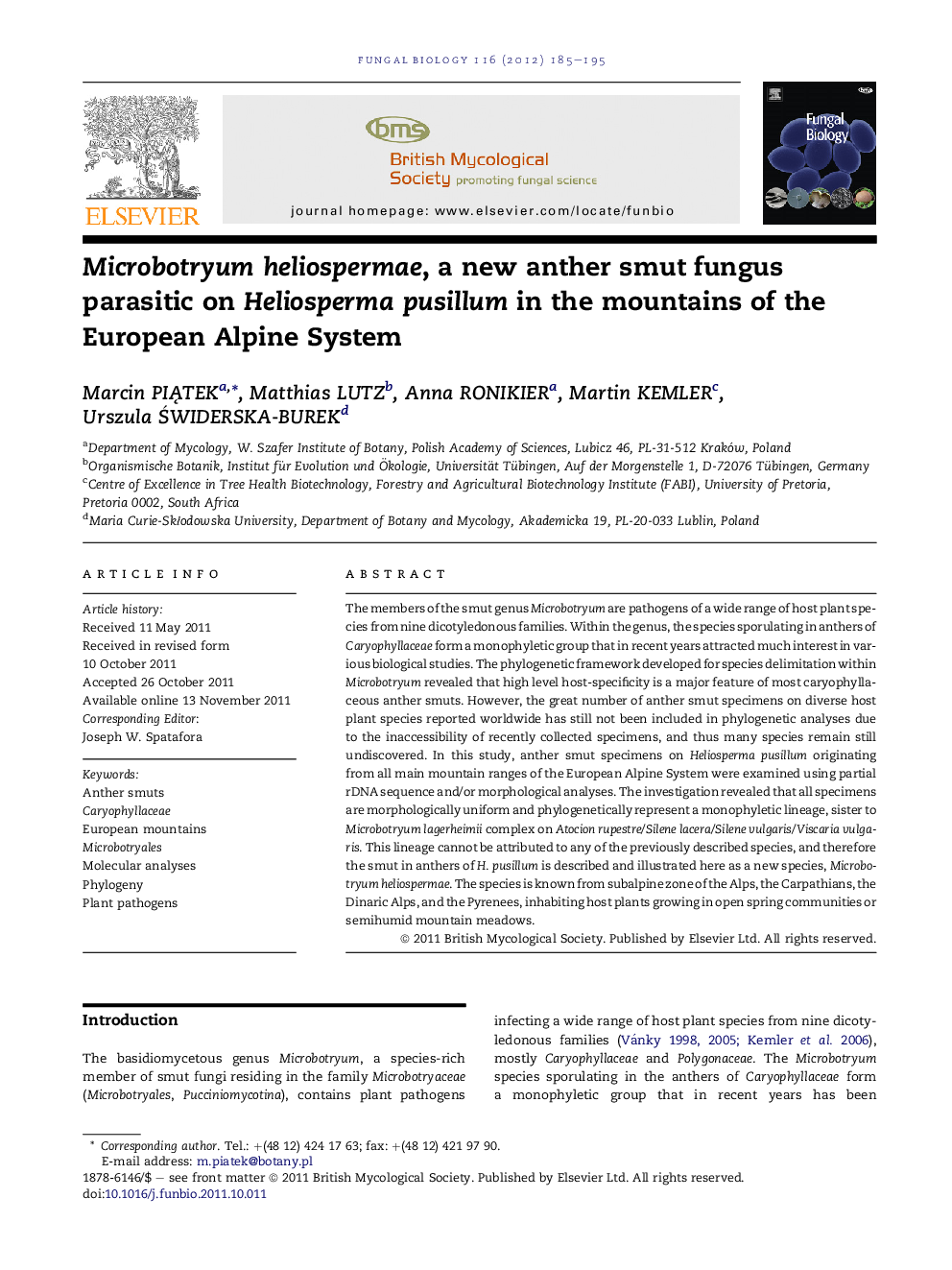| Article ID | Journal | Published Year | Pages | File Type |
|---|---|---|---|---|
| 4356919 | Fungal Biology | 2012 | 11 Pages |
The members of the smut genus Microbotryum are pathogens of a wide range of host plant species from nine dicotyledonous families. Within the genus, the species sporulating in anthers of Caryophyllaceae form a monophyletic group that in recent years attracted much interest in various biological studies. The phylogenetic framework developed for species delimitation within Microbotryum revealed that high level host-specificity is a major feature of most caryophyllaceous anther smuts. However, the great number of anther smut specimens on diverse host plant species reported worldwide has still not been included in phylogenetic analyses due to the inaccessibility of recently collected specimens, and thus many species remain still undiscovered. In this study, anther smut specimens on Heliosperma pusillum originating from all main mountain ranges of the European Alpine System were examined using partial rDNA sequence and/or morphological analyses. The investigation revealed that all specimens are morphologically uniform and phylogenetically represent a monophyletic lineage, sister to Microbotryum lagerheimii complex on Atocion rupestre/Silene lacera/Silene vulgaris/Viscaria vulgaris. This lineage cannot be attributed to any of the previously described species, and therefore the smut in anthers of H. pusillum is described and illustrated here as a new species, Microbotryum heliospermae. The species is known from subalpine zone of the Alps, the Carpathians, the Dinaric Alps, and the Pyrenees, inhabiting host plants growing in open spring communities or semihumid mountain meadows.
► A new species of a smut fungus sporulating in anthers of Heliosperma pusillum is described as new to science. ► Biogeographical codistribution of the new species and its host plant across the European Alpine System is demonstrated. ► Phylogeny indicates strict host dependence, confirming high specificity as a feature of most caryophyllaceous anther smuts. ► Close relationship of the host-specific new species to an unresolved species complex on nonrelated hosts is demonstrated. ► Phylogeny and host plant range suggest that both cospeciation and host jumps could act in evolution of these anther smuts.
